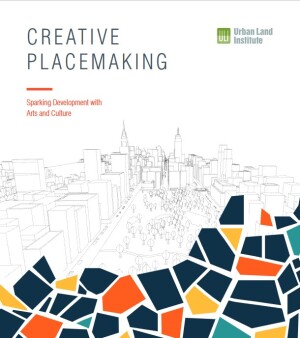The benefits of creative placemaking, along with best practices and successful case studies in cities throughout the United States, are explored in the latest ULI report, Creative Placemaking: Sparking Development with Arts and Culture . The report presents the business case and process for successful creative placemaking, defined in the report as a process that integrates arts and culture with good design.
It offers insights about how creative placemaking—leveraging arts and culture—can spark a creative culture in real estate projects, revitalize communities, and boost financial and other return on investment (ROI) measures for developers. It also provides best practices about how to plan, finance, implement, and manage projects.
Along with this, the report offers examples and case studies illustrating successful creative placemaking across diverse project types and in U.S. cities of various sizes, economic conditions, and geographic locations.
“As cities struggle to rebuild and come back from pandemic devastation—economic, social, and physical—creative placemaking is perhaps our most powerful tool for renewal,” says leading ULI member Marilee Utter, president of Citiventure Associates and one of the authors of the report. “Using culture as a foundation reinforces inclusivity, equity, and authenticity to the local community, and the result is a highly marketable approach that naturally attracts both public and private partners. This publication speaks to private and community developers alike, focusing on the details and ‘how to’s’ of creating places that thrive and endure.”
Drawing on deep research and knowledge from ULI members and creative placemaking experts, the report identifies 10 best practices that can be used in cities throughout the world. The practices address where and how to start creative placemaking in real estate development, who should be involved, when to engage artists, what skills are needed, and financing the project. This report also provides guidance on planning, implementing, and financing creative placemaking projects, as well as ongoing programming.
“Creative placemaking in real estate development is important now, more than ever, in this time of COVID-19 and racial unrest,” says former ULI senior visiting fellow Juanita Hardy, an author of the report and managing principal of Tiger Management Consulting Group LLC. “Creating places inspired by art and culture provides common ground for connection, inspiration, and healing. We can be reminded, for example, through artfully designed lighting and signage to keep ourselves and others safe while socially connecting in a COVID-responsible way. Places that reflect its cultural and historic relevance can inform, inspire, and promote healing, especially among the disenfranchised. These become sought-after places that attract people, promote the local economy, and help to build brand.”


